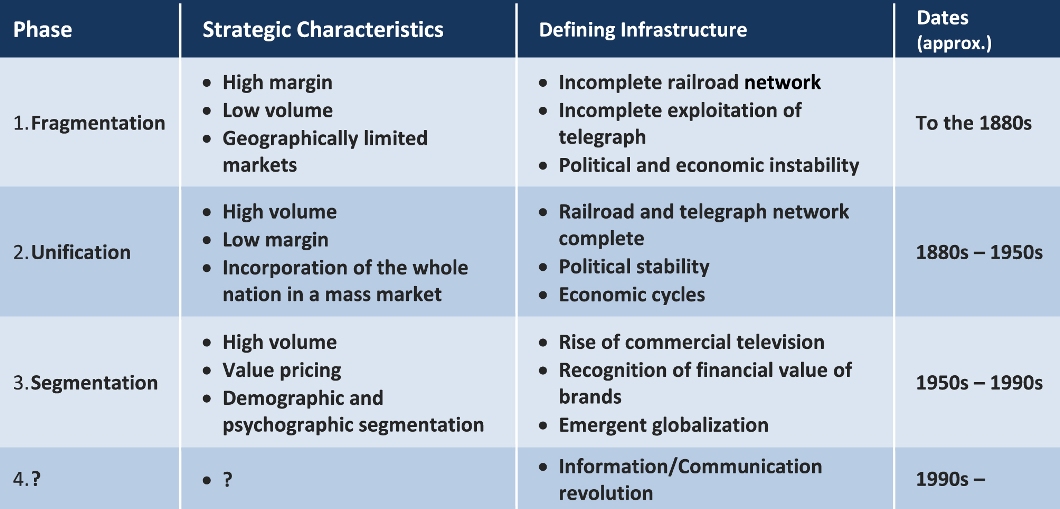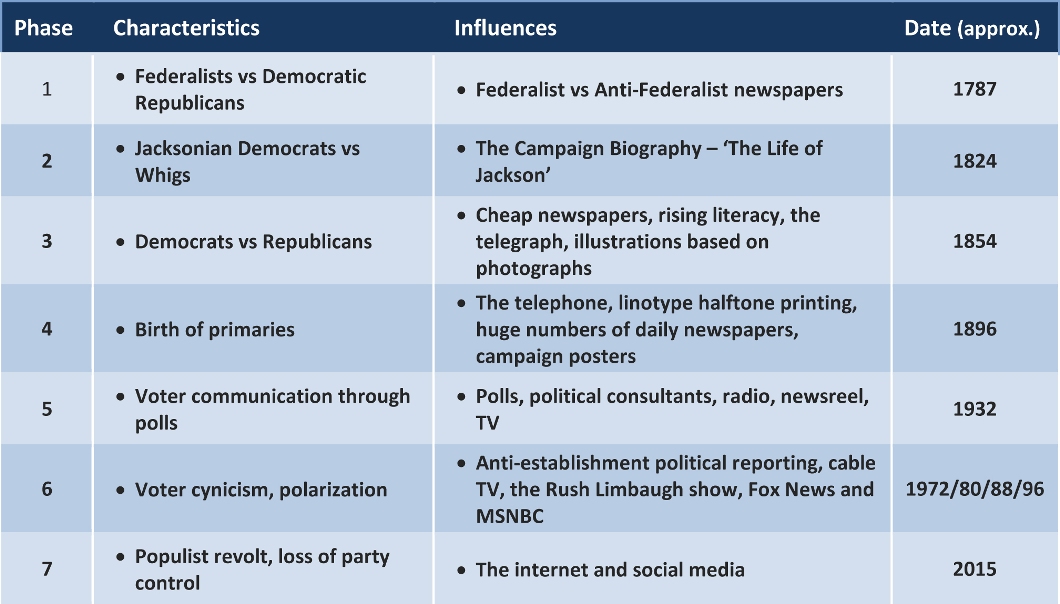Wait, what?
Gerard Smith
Managing Principal
The Future of Media
In 2010 I wrote an FSG essay on the future of media and marketing. It was obvious that the internet was radically changing media consumption, and that mass marketing would be profoundly affected, effectively decoupling what had been a mutually dependent relationship. So some interesting and important questions were being raised but at that time not written about, as media and marketing were looked at in isolation. This was perhaps not surprising – trends are almost always considered separately, and make ‘trend watching’ an inevitably sterile endeavor. By contrast, because scenario planning involves the creation of vivid representations of widely different, but plausible alternative futures to which participants respond with appropriate strategies, the cross-impact of multiple trends has to be explored.
In writing the essay I had been influenced by a book – New and Improved: The Story of Mass Marketing in America by Richard S. Tedlow, a professor at Harvard Business School. Professor Tedlow identified three distinct phases in the history of marketing, each linked to an enabling change in infrastructure, but as an historian writing in the mid-1990s, he understandably left a question mark over the implications of the defining change of the fourth phase, the information/communication revolution, still in embryonic form at that time.

(Adapted from New and Improved – The History of Mass Marketing in America, Richard Tedlow, 1996.)
The FSG essay argued that the future looked dim for both mass marketers and the mass media. Once liberated from legacy ‘push’ media, people would avoid or at best ignore online advertising, and the type of promotional marketing best suited to online formats would be unsuitable for the creation of mass brands; despite these obvious headwinds, the online media world was still largely based on an advertising-funded business model, with eyeballs as the key metric. The fourth phase of mass marketing seemed stuck in the paradigm of the third phase, with mass media grimly hanging on.
The Future of Media and the two-party system
This theme – the information/communication revolution and the declining strength of mass brands – is echoed in the political context. It is explored in an interesting recent New Yorker piece – “The Party Crashers” – where Jill Lepore traces the development of the American two-party system through six iterations, suggesting that we are seeing the beginning of the seventh. Each stage has been associated with novel forms of communication – and revolutions in communication tend to pull people away from the elites. These changes can’t really be dated to a particular year, and are gradual, also reflecting economic issues, voter demographics and what, across the pond, Prime Minister Harold McMillan famously feared – “Events, dear boy, events.”

But the internet has undoubtedly contributed to a period of political disequilibrium, and party leaders, like many managing mass brands, have lost control. Lepore pulls back from a prediction, but concludes “It’s unlikely, but not impossible, that the accelerating and atomizing forces of this latest communications revolution will bring about the end of the party system and the beginning of a new and wobblier political institution.”
We are living through acutely transitional times, where technology has outpaced the social and commercial structures to manage it. Have we reached peak entropy? We cannot know the future, but that doesn’t mean we should retreat from trying to prepare for it. Scenario planning, the creation and exploration of alternative futures, is the best way we know for an organization to embrace uncertainty, using uncertainty itself as a lever to deal with the future, and plan effectively.
And, of course, we can help with that.

For decades people have been
For decades people have been trying to figure out what dichotomy might replace the standard American liberal-conservative divide. It appears Trump’s one contribution may be to create a new coalition of the expropriated, aggrieved and either un- or mis-educated (under- or mis-educated with respect to what the market eventually decided was worth paying a living wage for). He may not achieve a majority in the fall, but his coalition does not correspond to either of the old ones – it includes the working class whites the Democrats used to include, and the more hard-core nativist, traditionalist (though perhaps not the very religious) and anti-elitist Republicans. Bernie Sanders appeals to some of the same working class sentiments, though he also gets the educated and the very liberal, which Trump does not. As you mention in your article, social media seems to be driving this dissolution of the traditional party coalitions, and it may take decades to titrate out into another recognizable dualism. As Adam said to Eve after the expulsion from Eden, “My dear, we live in a time of transition.”